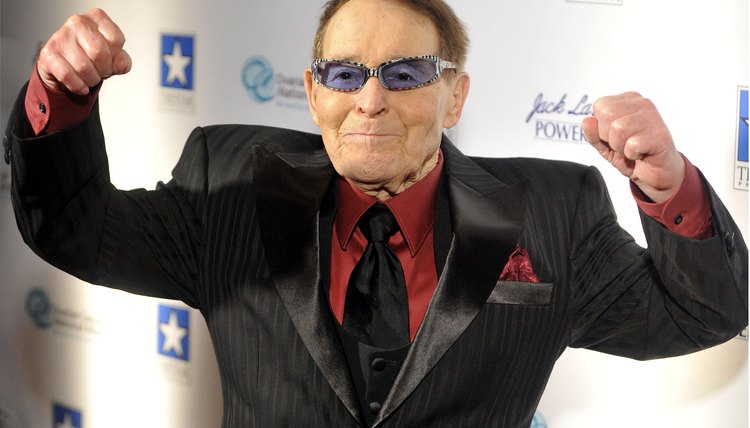Workouts From the 1940s & 1950s

Primitive nomads spent days hunting and gathering, and traveled miles on foot to neighboring tribes to share their bounty and celebrate successful hunts. By 2500 B.C., Confucius put forth the idea that a range of diseases could be prevented by exercise. The development of organized workouts continued as societies evolved. In the 1940s, economic difficulties and start of World War II precipitated failing fitness levels.
Jumping Jacks
Recruits coming into the armed services during World War II were found to be unfit for duty in droves, according to the University of New Mexico. Because of the strikingly low levels of physical fitness, researchers began developing guidelines for cardiovascular fitness testing. Jumping jacks, developed by West Point officer John "Black Jack" Pershing in World War I, were used to increase cardiovascular endurance in soldiers and entered the mainstream at the same time.
Resistance Machines
Jack LaLanne began developing resistance pulley machines, including leg extension equipment, as far back as 1936. He opened a health club in California, but his unique style of workouts didn't become popular until the 1950s when he launched a fitness television program. LaLanne, who often is considered the father of fitness, promoted weight training as a means of obtaining ultimate fitness.
Calisthenics
Jack LaLanne also brought calisthenics into the home via his TV show, "The Jack LaLanne Show." His aerobic workouts and water aerobic programs complemented his weight training workouts. Housewives all over the country worked out with LaLanne doing one-sided jumping jacks, marching in place, high kicks and leg lifts. Many a Mom could be found on her living room rug with her legs lifted high in the air, her hips supported by her hands, bicycling for all she was worth.
Five Basic Exercises
Bill Orban was a Canadian football and hockey player who graduated from the University of California physical education program. Orban designed the 5BX, five basic exercise program for the Royal Canadian Air Force in the 1950s. A precursor to the modern circuit training, the premise for his workout was that if you exercise for 15 minutes a day, three times a week, performing the same round of activities, you'd remain healthy and fit. The five exercises included touching your toes, ab crunches, push ups, a stationary run and leg kicks. The program required you to build intensity into your workouts as the 11-minute routine progressed over time.
References
Writer Bio
Linda Ray is an award-winning journalist with more than 20 years reporting experience. She's covered business for newspapers and magazines, including the "Greenville News," "Success Magazine" and "American City Business Journals." Ray holds a journalism degree and teaches writing, career development and an FDIC course called "Money Smart."
